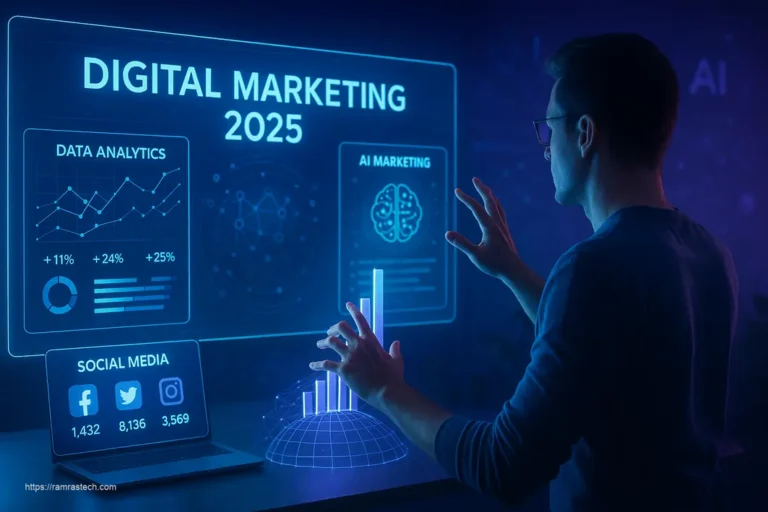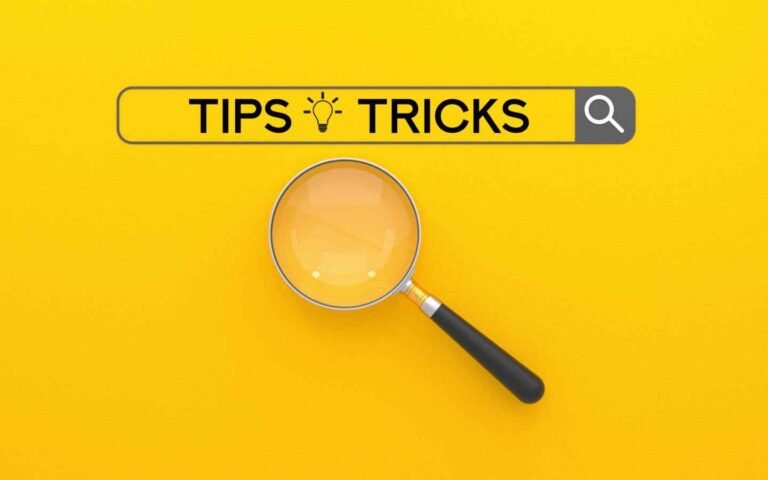Elevate Your Brand with These 7 Unbeatable Digital Marketing Strategies

In today’s hyper-competitive digital landscape, having effective digital marketing strategies isn’t just nice to have—it’s absolutely essential for survival. Whether you’re a startup finding your footing or an established brand looking to maintain your edge, the right digital marketing approach can be the difference between thriving and merely surviving. But here’s the thing: digital marketing strategies are constantly evolving, and what worked yesterday might not cut it tomorrow.
So, what exactly makes a digital marketing strategy successful in today’s environment? How can you ensure your brand stands out when everyone’s fighting for the same slice of attention? Let’s dive in and explore the seven game-changing digital marketing strategies that can transform your brand’s online presence and drive meaningful results.
Understanding Digital Marketing Strategies: The Foundation of Online Success
Before we jump into specific tactics, let’s get clear on what we’re talking about. Digital marketing strategies refer to carefully planned approaches that leverage online channels—including social media, email, content, and search engines—to connect with potential customers, build relationships, and ultimately drive conversions.
Think of your digital marketing strategy as the roadmap guiding all your online marketing efforts. Without it, you’re essentially driving blindfolded—you might reach your destination by sheer luck, but chances are you’ll waste a lot of time and resources along the way.
Digital marketing strategies matter now more than ever because:
- Your customers live online (the average American spends nearly 7 hours daily consuming digital media)
- Competition is fiercer than ever (there are over 1.88 billion websites competing for attention)
- Consumer expectations have skyrocketed (53% of consumers expect brands to know their unique needs and preferences)
A well-crafted digital marketing strategy doesn’t just boost your visibility—it ensures your brand reaches the right people, with the right message, at the right time. It’s about making meaningful connections that translate to real business results.
Market Analysis: Know Your Battlefield
Successful digital marketing strategies begin with thorough market analysis—you can’t win a game if you don’t understand the playing field. Market analysis involves studying industry trends, consumer behavior patterns, and technological shifts to identify opportunities and threats.
Here’s how to conduct effective market analysis for your digital marketing strategy:
1. Conduct a comprehensive SWOT analysis
Start by honestly evaluating your brand’s Strengths, Weaknesses, Opportunities, and Threats. This foundational analysis provides clarity on where you stand and where you should focus your efforts.
2. Leverage industry reports and tools
Use resources like:
- Industry benchmark reports from sources like HubSpot or Content Marketing Institute
- Google Trends to track interest in specific topics over time
- Social listening tools to understand conversations happening in your space
3. Study market size and growth potential
Understanding your total addressable market helps set realistic goals. Is your target market growing or shrinking? Are there emerging segments you could tap into?
As digital marketing guru Neil Patel says, “Understanding your market isn’t just about gathering data—it’s about gaining insights that inform action.” The insights you gain from market analysis should directly influence your channel selection, messaging approach, and resource allocation.
Competitor Research: Learn from Others’ Successes and Failures
Why start from scratch when you can learn from what others are already doing? Effective competitor research isn’t about copying—it’s about understanding what works in your space and identifying gaps you can fill.
“Your competitors are a free source of market research if you know how to analyze them properly,” notes digital marketing strategist Rand Fishkin.
Here’s how to make competitor research a cornerstone of your digital marketing strategies:
1. Identify your true competitors
These include:
- Direct competitors (offering similar products/services)
- Indirect competitors (offering alternative solutions to the same problem)
- Aspirational competitors (where you want to be in the future)
2. Analyze their digital footprint
Examine:
- Website structure, design, and user experience
- Content strategy and publishing frequency
- Social media presence and engagement rates
- Email marketing tactics (sign up for their newsletters!)
- Paid advertising approaches
3. Use competitive analysis tools
Leverage tools like:
- SEMrush or Ahrefs to analyze keyword strategies and backlink profiles
- SimilarWeb to understand traffic sources and user behavior
- Facebook Ad Library to see their advertising approaches
What you’re looking for are patterns of success or failure. Which content formats get the most engagement? What messaging seems to resonate with your shared audience? Where are they investing their resources—and where are they notably absent?
These insights can help you avoid costly mistakes and identify opportunities competitors might have missed. For example, you might discover an underserved segment of the market or a content format your competitors haven’t fully exploited.
Developing Customer Personas: The Key to Personalized Marketing
The most brilliant digital marketing strategies will fall flat if they’re not speaking directly to your ideal customers. This is where customer personas come in—detailed, semi-fictional representations of your perfect customers based on real data and educated speculation.
“Getting the right message to the right person at the right time is a lot more effective than blasting the same message to everyone, everywhere, all the time,” says marketing expert Ann Handley.
Here’s how to develop customer personas that will sharpen your digital marketing strategies:
1. Gather both quantitative and qualitative data
- Analyze your CRM data to identify patterns in your current customer base
- Conduct customer interviews to understand pain points and motivations
- Use survey data to validate assumptions
- Review support tickets and sales calls for common questions and objections
2. Create detailed persona profiles
Each persona should include:
- Demographic information (age, location, income level, etc.)
- Psychographic details (values, interests, lifestyle choices)
- Goals and challenges related to your product/service
- Preferred communication channels and content types
- Decision-making factors and common objections
3. Map personas to the buyer’s journey
Understand how each persona moves from awareness to consideration to decision:
- What questions do they ask at each stage?
- What information do they need before moving forward?
- Which channels do they prefer at different points in their journey?
With well-developed personas, you can create hyper-targeted content that addresses specific needs and pain points, choose the right channels for distribution, and craft messaging that resonates on a deeper level.
Remember: personas aren’t static. As you gather more customer data and your market evolves, your personas should be refined and updated to maintain their accuracy and usefulness.
Lead Generation Tactics: Filling Your Marketing Funnel
Even the most impressive digital marketing strategies fail without a steady stream of qualified leads. The most successful brands use a multi-channel approach to lead generation, creating numerous pathways for potential customers to discover and engage with them.
“The aim of marketing is to know and understand the customer so well the product or service fits them and sells itself,” management guru Peter Drucker famously said. This is particularly true for lead generation—it’s about attracting people who already have a need your product can fulfill.
Here are some powerful lead generation tactics to incorporate into your digital marketing strategies:
1. Content marketing with strategic intent
Content marketing isn’t just about creating blog posts—it’s about strategically using content to attract and qualify leads:
- Create gated content (like ebooks, webinars, or templates) that addresses specific pain points
- Use SEO-optimized content to capture high-intent search traffic
- Develop thought leadership content to build authority and trust
For example, our guide to affordable SEO techniques helps businesses improve their rankings while maintaining budget constraints—attracting exactly the kind of client who might need our services.
2. Paid advertising with precision targeting
Paid campaigns can be incredibly effective when targeted properly:
- Use retargeting to re-engage website visitors who didn’t convert
- Implement lookalike audiences based on your best current customers
- Test different ad formats across platforms (video, carousel, static images)
As our article on maximizing ROI with PPC explains, the key is continuously testing and optimizing to improve performance over time.
3. Email marketing automation
Email remains one of the highest-ROI channels for most businesses:
- Create targeted nurture sequences based on user behavior
- Segment your list for more relevant messaging
- Use personalization to increase engagement
Our guide to email marketing tools explores how even small businesses can implement sophisticated email marketing strategies without breaking the bank.
4. Social media with purpose
Effective social media lead generation goes beyond posting content:
- Use platform-specific lead generation tools (like LinkedIn Lead Gen Forms)
- Create compelling offers that drive traffic to landing pages
- Engage directly with potential customers in relevant groups and discussions
Our article on unbeatable social media hacks provides actionable techniques to increase engagement and drive more qualified leads.
The key to successful lead generation is measurement and optimization. Track important metrics like:
- Cost per lead by channel
- Lead-to-customer conversion rate
- Customer acquisition cost
- Lifetime value of customers by lead source
These metrics help you identify which channels and tactics deliver the best ROI, allowing you to double down on what’s working and adjust or abandon what isn’t.
Optimizing the Conversion Funnel: Turning Interest Into Action
Generating leads is only half the battle—your digital marketing strategies must also focus on converting those leads into customers. This is where conversion funnel optimization comes in.
The conversion funnel represents the journey your potential customers take, from first becoming aware of your brand to making a purchase decision. Each stage requires different content, messaging, and tactics to move prospects to the next level.
1. Awareness Stage Optimization
At this stage, potential customers are just discovering your brand or realizing they have a problem you can solve:
- Create educational content that addresses common pain points
- Optimize for broad, informational keywords
- Focus on building brand visibility through social media and PR
Metrics to track include brand awareness, website traffic, and social media engagement.
2. Consideration Stage Optimization
Now prospects are actively researching solutions and comparing options:
- Offer detailed guides, comparison content, and case studies
- Implement retargeting campaigns to stay top-of-mind
- Use email nurturing to provide relevant information based on interest
Track metrics like email open rates, content downloads, and return visits to your site.
3. Decision Stage Optimization
At this point, prospects are ready to make a purchase decision:
- Streamline the buying process to remove friction
- Use social proof (testimonials, reviews) to build confidence
- Offer incentives for immediate action when appropriate
Key metrics include conversion rates, cart abandonment rates, and average order value.
According to research from Salesforce, 65% of digital sales now occur on mobile devices—yet many brands still haven’t optimized their conversion funnels for mobile users. This represents a significant opportunity for brands willing to create seamless mobile experiences.
“The difference between a good and great conversion rate can translate to millions in revenue,” notes CRO expert Peep Laja. Our detailed guide to conversion rate optimization provides seven practical techniques to improve your conversion rates.
Remember that optimization isn’t a one-time effort—it’s an ongoing process of testing, learning, and refining based on data and user feedback.
Integration and Implementation: Bringing It All Together
Each element we’ve discussed is powerful on its own, but the magic happens when they work together as part of cohesive digital marketing strategies. Integration ensures consistent messaging across channels, allows for efficient resource allocation, and creates a unified customer experience regardless of where prospects encounter your brand.
Here’s how to successfully integrate and implement your digital marketing strategies:
1. Set clear, measurable objectives
Every component of your strategy should connect to specific business goals. For example:
- Increase qualified leads by 25% within 6 months
- Improve conversion rates from 2% to 3% by Q4
- Reduce customer acquisition costs by 15% year-over-year
2. Create a detailed implementation timeline
Develop a calendar that outlines:
- When new content will be published
- When paid campaigns will launch and end
- Email send schedules
- Social media posting frequency
- Measurement and reporting cadence
3. Define team roles and responsibilities
Clarify who owns which aspects of the strategy:
- Who creates content?
- Who manages paid campaigns?
- Who tracks performance metrics?
- Who makes optimization decisions?
4. Implement cross-channel tracking
Use tools like Google Analytics 4, UTM parameters, and CRM integrations to understand how channels work together through the customer journey.
5. Develop a process for regular strategy reviews
Schedule monthly or quarterly reviews to assess performance against objectives and make necessary adjustments.
As digital marketing expert Ryan Deiss notes, “The most successful digital marketing strategies are the ones that are constantly evolving.” Markets change, customer preferences shift, and new opportunities emerge—your strategy needs to be flexible enough to adapt.
Our digital marketing masterclass provides deeper insights into how to integrate various digital marketing elements for maximum impact.
Conclusion: Your Digital Marketing Strategy Roadmap
Successful digital marketing strategies aren’t built on guesswork—they’re the result of careful planning, customer understanding, and continuous optimization. By integrating market analysis, competitor research, customer personas, lead generation tactics, and conversion funnel optimization, you create a comprehensive approach that positions your brand for increased visibility, engagement, and growth.
Remember that digital marketing is both an art and a science. While data should inform your decisions, don’t lose sight of the human element. Behind every click, open, and purchase is a real person with real needs and desires. The most effective digital marketing strategies connect on both logical and emotional levels.
As you implement these strategies, be patient yet persistent. Meaningful results rarely happen overnight, but consistent application of these principles will create compound effects over time. Track your progress, celebrate your wins (even small ones), and view challenges as opportunities to refine your approach.
The digital landscape will continue to evolve, but the fundamental principles we’ve discussed will remain relevant. Stay curious, keep experimenting, and never stop optimizing—that’s the true secret to digital marketing success.
FAQs About Digital Marketing Strategies
What is the most important element of a digital marketing strategy?
While all components matter, customer understanding is arguably the most important. Without deep insight into your audience’s needs, challenges, and behaviors, even the most technically perfect execution will fall flat. Start with comprehensive persona development and let that inform all other strategic decisions.
How long does it take to see results from digital marketing strategies?
It depends on your goals and channels. Some tactics (like PPC advertising) can generate immediate traffic, while others (like SEO and content marketing) typically take 3-6 months to show significant results. Focus on leading indicators (engagement, click-through rates) while waiting for lagging indicators (conversions, revenue) to materialize.
How much should I budget for digital marketing?
Industry benchmarks suggest allocating 7-10% of revenue for marketing for established businesses and 12-20% for growth-stage companies. However, the right budget depends on your industry, competition, goals, and current market position. Start with clearly defined objectives and work backward to determine necessary resources.
Should I handle digital marketing in-house or hire an agency?
This depends on your team’s skills, available time, and budget. In-house teams often have deeper brand knowledge but may lack specialized expertise in certain channels. Agencies bring broad experience and specialized skills but at a higher cost. Many businesses use a hybrid approach, keeping strategic oversight in-house while outsourcing specialized execution.
How often should I update my digital marketing strategy?
Review your strategy quarterly and make major updates annually. However, tactical adjustments should happen continuously based on performance data. The digital landscape evolves rapidly, so your strategy should be a living document rather than set in stone.






